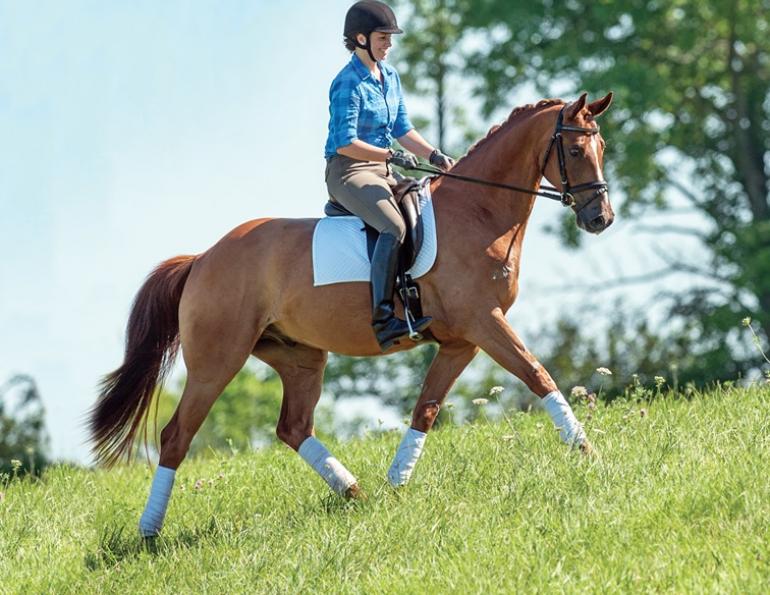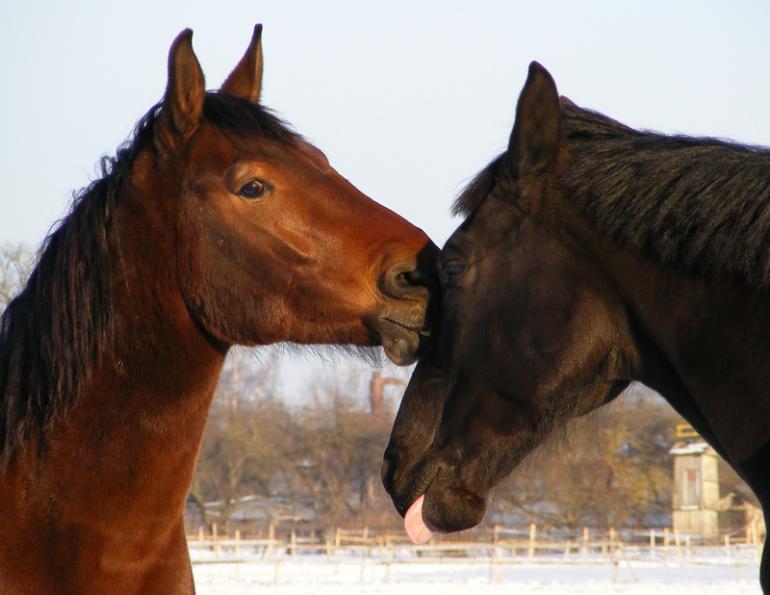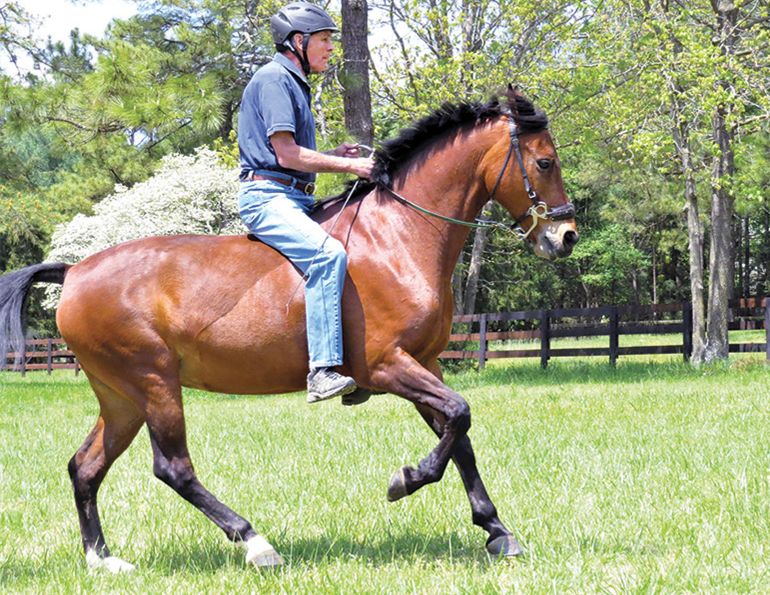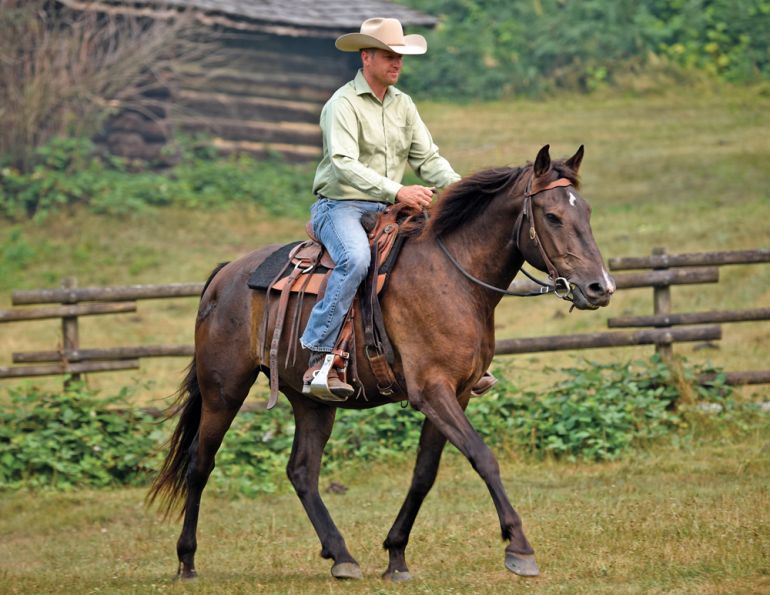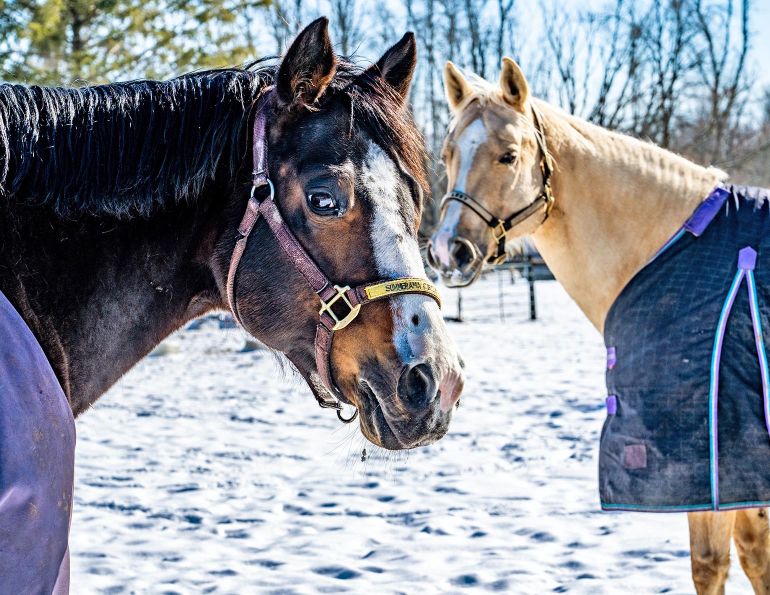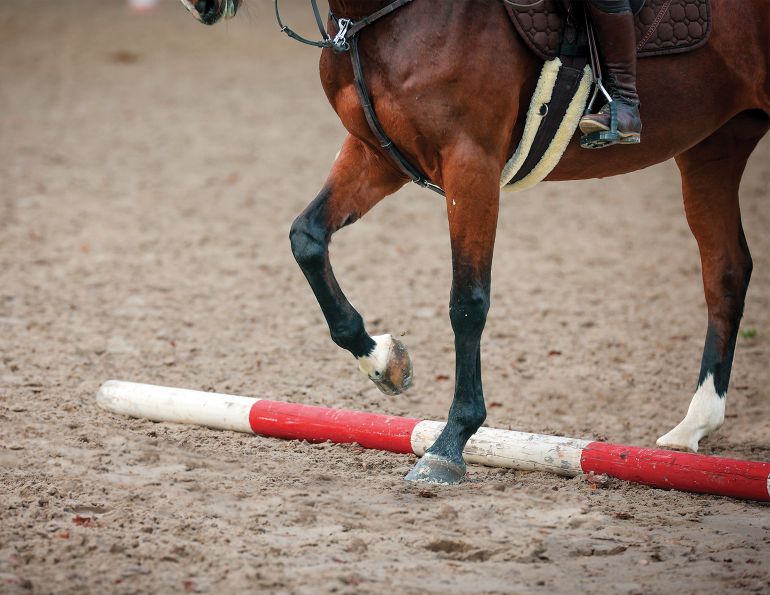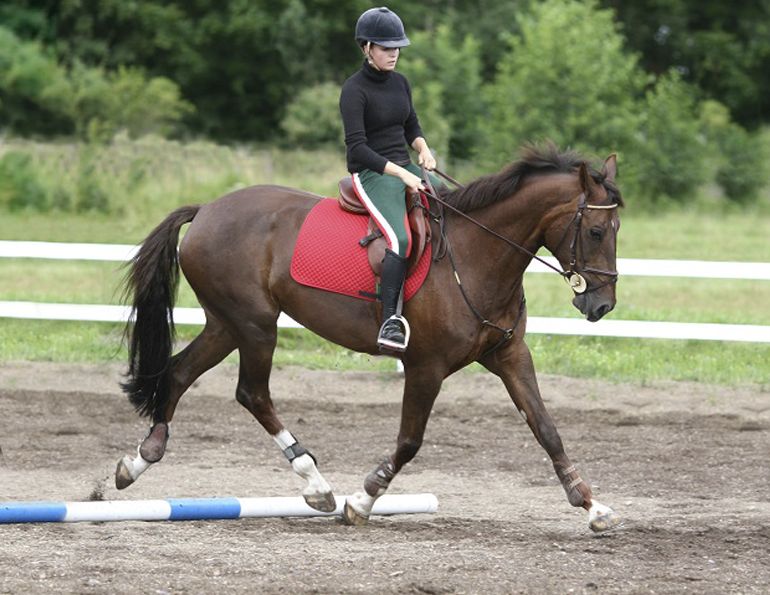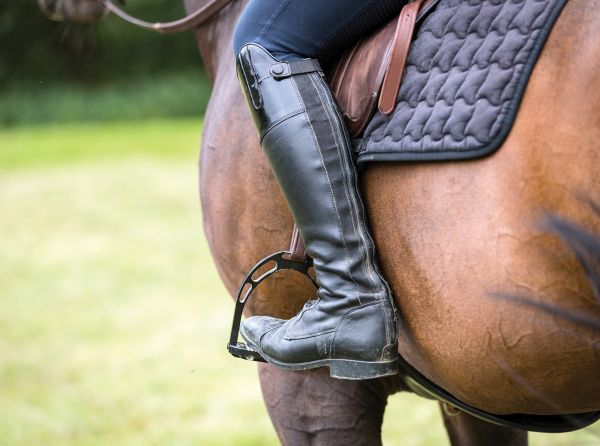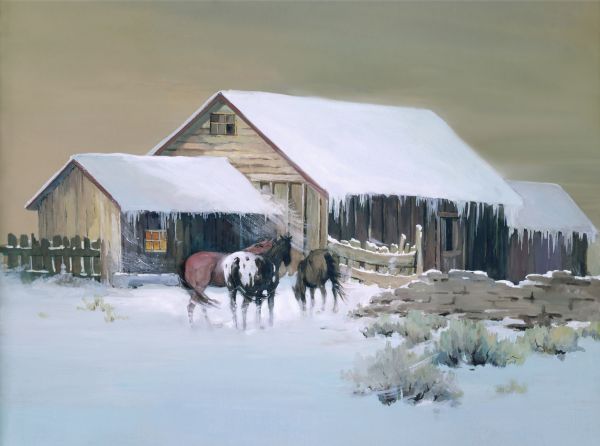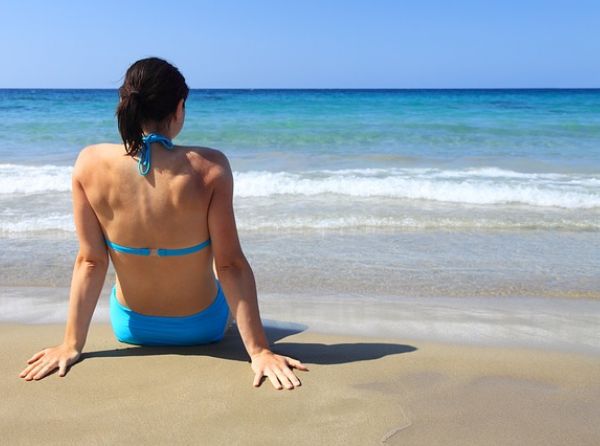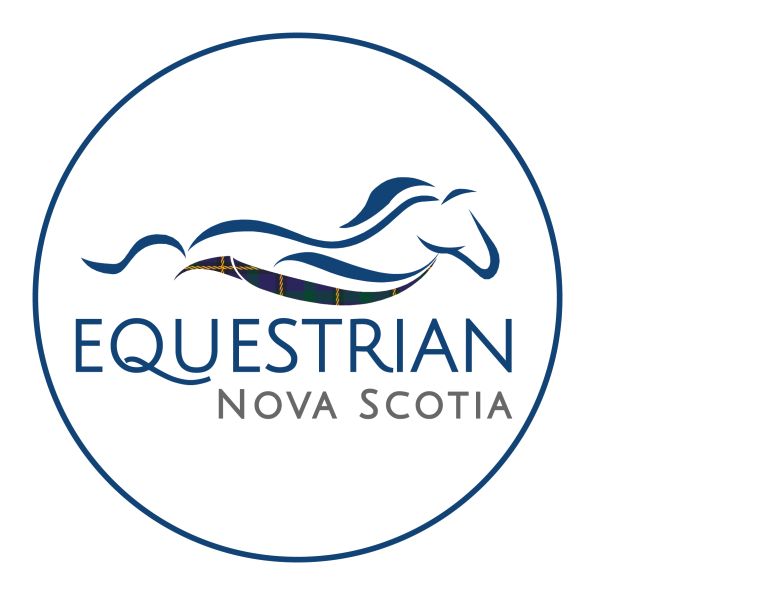Keys to an effective horse training session.
By Lindsay Grice, Equestrian Canada coach and judge
I’ve trained a lot of horses. After nailing up my sign as a “professional horse trainer” several decades ago, I learned quickly that overhead is high in the horse business so you’d better make some hay if you’re going to pay your bills. Consequently, I rode many horses each day, breaking young ones and tuning up show horses.
I quickly realized that we learn a lot by trial and error. With a medley of horses to compare we form a sense of what works and what doesn’t. The downside of trial and error is the “error” part; we all learn at the expense of some horses, but hopefully for the benefit of others.
When I began to study the science of horse behaviour and learning, research confirmed many things I’d discovered through experience as a coach and trainer. I also encountered evidence that modified aspects of my approach to training horses.
Savvy teachers adapt to the learning style of their students. Our horses do best when we tailor our teaching methods to the ways they view and make sense of things. While we’ll never know what it’s like to be a horse, we’re assisted by a growing body of research to inform “equine learning theory.” A lot of these findings verify the observations of those who’ve spent years watching and working with horses. Other evidence clashes with some of our long-held equine traditions.
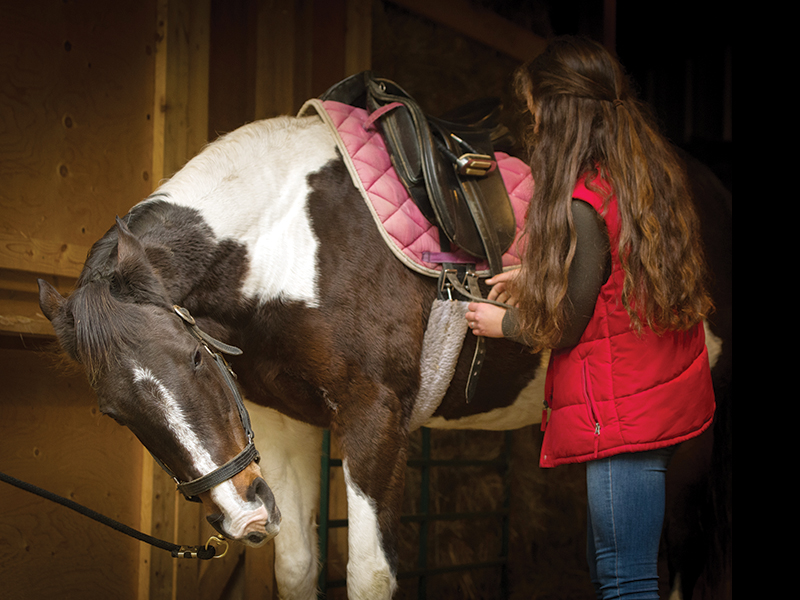
Even tacking up is a teachable moment. In the arena and out, a horse is continually reading his handler and caregivers. Photo: Clix Photography
HOW DO HORSES LEARN BEST?
I’ll share some technical categories I’ve found to be helpful. We’ll put the theory into practise and finally, dispel a few myths.
Horses and humans learn by two processes. We use both in schooling our horses, sometimes while unaware of it.
1 - Operant conditioning is training using rewards and consequences. A horse responds to a trainer’s cue with a choice, which is either rewarded or discouraged. It’s like telling a joke that gets a laugh or posting a photo that gathers lots of “likes” — behaviour is strengthened when there’s a payoff. When your gelding fails to give way to the boss mare at the round bale, she lays into him with bared teeth and he learns to choose the non-boss mare side of the bale.
2 - Classical conditioning involves learning to link a meaningless signal with its outcome. A previously insignificant sound or event begins to predict the routine to follow whether good or bad. Examples are when your cat makes a beeline for the kitchen at the sound of the can opener or when horses start pawing the stall floor when they hear the rattling feed cart. Classical conditioning is the essence of clicker training and the exasperation of competitors whose horses begin anticipating the canter at the click of the announcer’s mic.
Related: Get it Done Horsemanship
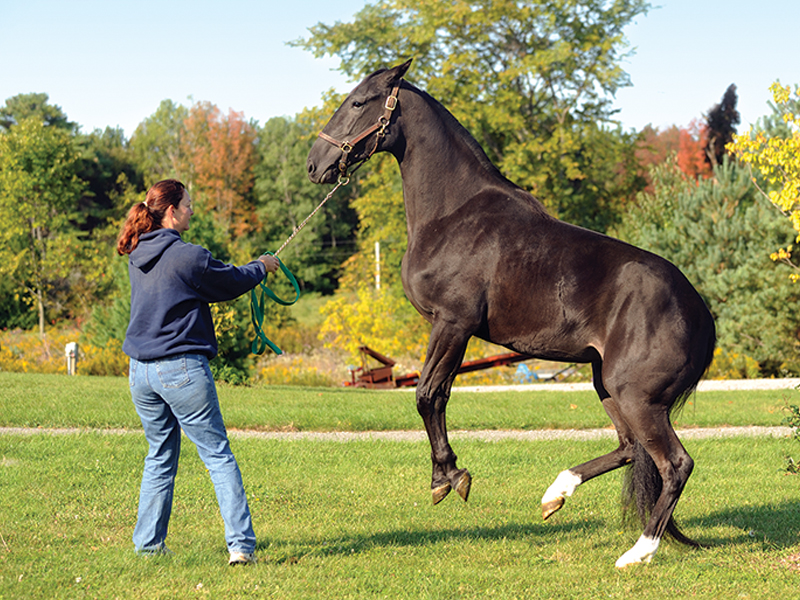
Resistances will grow like weeds if left unchecked. Catch them early and turn them into training opportunities. Photo: Clix Photography
Reinforcement is telling your horse that he gave the right answer. Provide a payoff and the behaviour will be reinforced and more likely to occur again. There are two ways to do it:
1 - Negative reinforcement is removing pressure to reward the intended response; this is the method riders principally use. Pressure motivates horses but the release of that pressure does the training. The rider softens the rein or drops their heel. As a coach, “melt” is one of my favourite word pictures.
Timing is crucial. Whatever your horse is doing when you release pressure, he’ll be more likely to do again. Miss the timing and we reward unwanted behaviour — we’re untraining when our horses accidently find release, such as when the horse tosses his head and removes pressure or kicks out and displaces the rider’s leg. Head-tossing can become rearing and kicking out can evolve into bucking.
2 - Positive reinforcement is giving the horse something he values for the target response. I use treats in combination with negative reinforcement (release) to retrain a horse through anxiety, such as with a nervous horse stepping into a trailer.
Food rewards are highly motivating and effective if timed right, which is immediately at the onset of the correct answer.
And so treats given to reward a good rid, actually reward the horse for doing what happened just before the treat delivery. When judging it’s common for me to see riders pat their horses as they circle away to reapproach a refused jump. A noble effort to calm themselves perhaps more than their horse, but to the equine mind a reward for circling away.
Related: Slow Down and Start a Horse Right
Shaping is gradually teaching a new behaviour by rewarding (reinforcing) a basic attempt then asking for one degree more until your “ultimate” behaviour is achieved. We build a skill piece by piece. Once grasped we can further shape the skill; for example, do it faster or slower; give me more strides; perform it in a round frame; and now in response to a lighter aid.
“Be satisfied with anything that is ‘a little better.’ Your horse will not go from lousy to perfect or from stiff to supple. He will get a little less lousy until he eventually becomes a little better, then a lot better.” - Jane Savoie
The teacher must have a lesson plan. What are your objectives based on yesterday’s session? What are the essential skills for your next show, trail ride, or for your horse’s job? What are the smaller pieces required to assemble those skills? For example, I work with therapeutic riding facility staff and volunteers to systematically build new skills and signals for their donated school horses and erase those “buttons” no longer useful in a horse’s new role. To maintain those new skills I describe how to plan a ten-minute tune-up using tools from learning theory — reinforcement, repetition, shaping.

As the teacher, you should have a lesson plan that considers both the previous ride and what you will work on during today’s session. Photo: Clix Photography
Define your expectations. Nothing can mess with a horse’s mind more than indistinct boundaries. Where exactly do you expect your horse to stand or to face when you mount? How fast do you want to walk back to the barn? How deep into this corner will you track? Is your horse sometimes allowed to fizzle to a halt or hand graze, yet at other times reined back or yanked for doing those things?
Communicate clearly. Biology class would be extra challenging with a teacher who mumbled or a professor with a thick accent. Such is your horse’s dilemma if he can’t decipher the language of his rider’s legs or hands. Help him out; place your leg discernably behind or at the girth, depending on the body part you want him to move or the maneuver you have in mind. Are your rein signals different for slowing, flexing, turning, raising, or lowering the neck?
Related: The Two Faces of Perfectionism in the Horse Industry
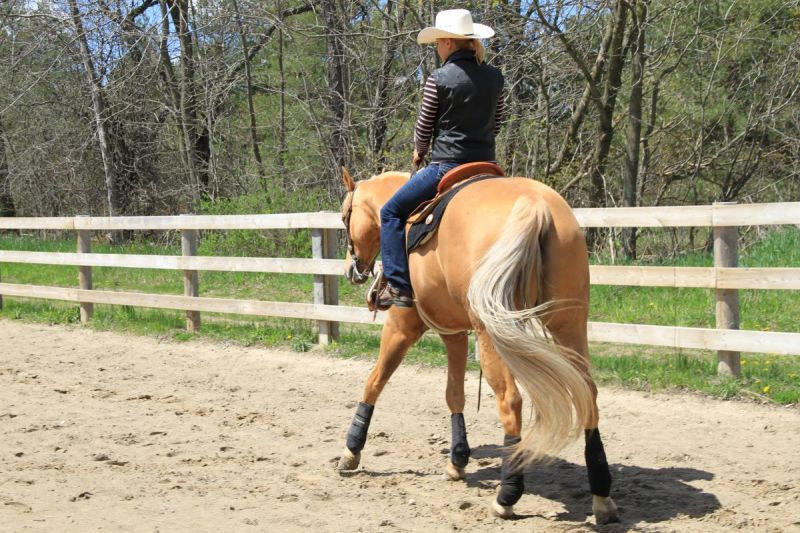
Communicate clearly. Place your leg discernably behind or at the girth, depending on your desired lead or the body part you want your horse to move. Photo: Peter Bruce
Keep it cool. An effective trainer raises their horse’s emotional state just enough to keep him attentive and motivated him to make a choice. The desire to gain something or avoid something inspires the horse to learn, but raise the tension too much and their only motivation is to escape it altogether.
Ovals not allowed. Trotting around in an oval-shaped circle and cutting corners in an arena will not yield the same dividends as asking your horse the questions that will arise in competition. Every discipline has its geometry: straight lines, circles, and turns. Transitions must be done at specific points.
Teaching includes testing. Take the basic skills your horse has learned into new environments. Practise your circles and lateral movements outside in the field without a fence-line as a guide. Ride alone and with some buddies. Scatter jump poles around the ring for trotting or side passing. Remind your horse that the movements and cues acquired in the indoor arena apply here, and here, and here, and ultimately at the horse show.
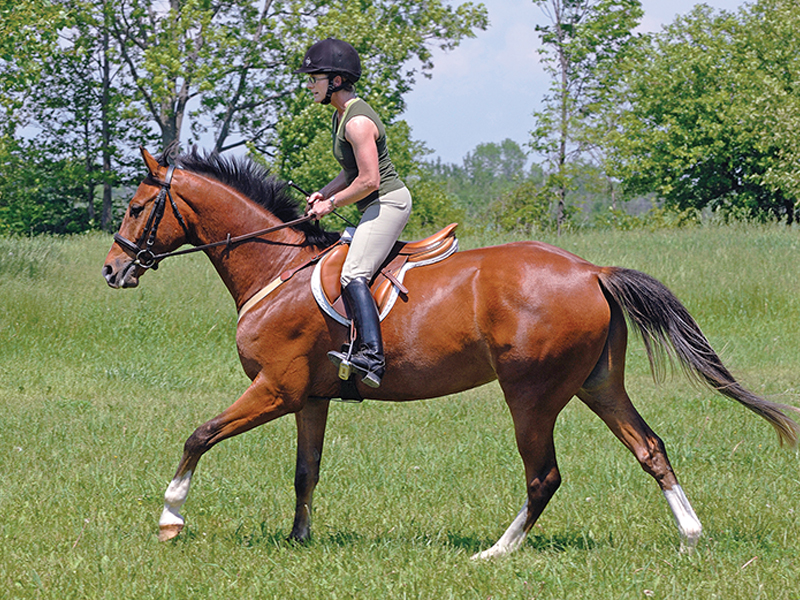
Test your horse by taking him into new environments to remind him that the lessons he’s learned apply on the trail, in the field, and everywhere else. Photo: Clix Photography
Training deposits and withdrawals. In the arena and out, every moment is a teachable moment. A horse is continually reading his handler and caregivers. He’s learning about boundaries and body language: This means this. This is worthy of my attention. This can be ignored. I see a pattern developing here. This is unpredictable and scary.
Whether leading or feeding; at the mounting block or in the wash stall; on the trail or on the rail — catch little resistances and harness them as training opportunities, because if left unchecked they will become withdrawals from your training account and will undoubtedly catch up to you later in a pressure situation such as a horse show.
Related: Traditions in Horsemanship
5 MYTHS (OR HALF-TRUTHS) THAT CAN SIDETRACK SCHOOLING
1 - My horse is in a bad mood. While it’s wise to be alert to changes in our horses’ baseline soundness or hormonal cycle, it’s unhelpful to see ourselves as mere victims of our horses’ moods. I tell my riding students to ride the horse you have today.
When I assume my horse is being naughty or conclude he’s willful and scheming to trick me, the truth is, in that moment of frustration I’ve really just run out of creativity and patience. Maybe I’m embarrassed in the presence of fellow riders or spectators. I’m blaming my horse instead of taking responsibility to communicate differently or more clearly. If you’re hitting a snag in a schooling session take a deep breath and assess the communication gap. And if plan A isn’t working opt for plan B.
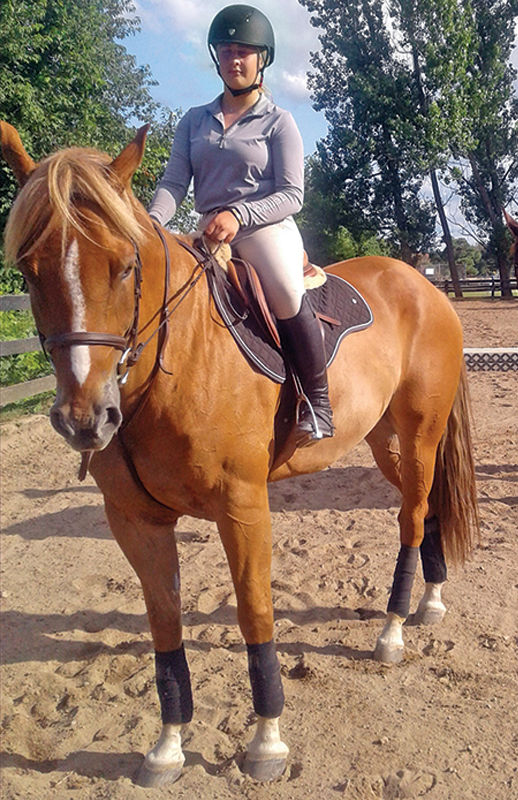
Can your horse decipher your language? Are your rein signals different for slowing, flexing, turning, raising or lowering the neck? Photo: Lindsay Grice
2 - My horse likes to work; he likes to have a job. It’s amazing that horses will accept and comply with our human whims, ranging from jumping to chasing cattle to endless circling without getting anywhere! Let’s be honest, they’d rather be in a pasture with their buddies.
3 - Put him away as soon as he “gets it.” This stretches the horse training adage “end on a good note” beyond its effectiveness. The first time a horse “gets it” may be by accident. Repeat the movement several times to develop a pattern.
4 - Practise, practise, practise makes perfect. Lap after lap at the canter; yet another warm-up jump or spin rotation… Over-rehearsing invites a horse to make a mistake, ending on a sour note instead of a good one. As a coach, I walk the balance between rider needs and horse needs and between practice and drilling. While you may gain from polishing your position and timing, it’s easy to forget that your horse is more than an exercise bike or a tool for your sport — he’s a living breathing partner.
Related: Do Equestrians Know How Their Horses Learn?
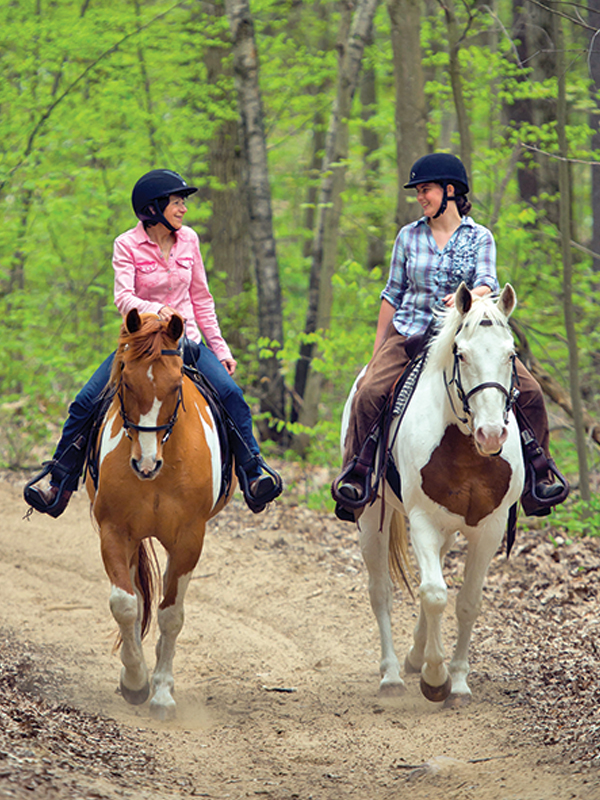
Your horse is a living, breathing partner who enjoys a break from practicing in the arena just as much as his rider does. Photo: Clix Photography
5 - A broke horse means “wet saddle blankets.” This old horseman’s adage fosters diligence and work ethic, yet an effective schooling session need not necessarily involve sweat. More often cooler heads prevail. While building fitness will necessitate some sweat, calm and systematic schooling punctuated with rest breaks is the best environment for learning.
I have learned to be efficient as a horse trainer and that wasting time means I can train fewer horses in a day. I have learned that efficient schooling just works better and the science confirms it.
Related: How to Build Confidence in Your Horse
Related: The Science of Tack & Training Aids
Photo: Clix Photography



